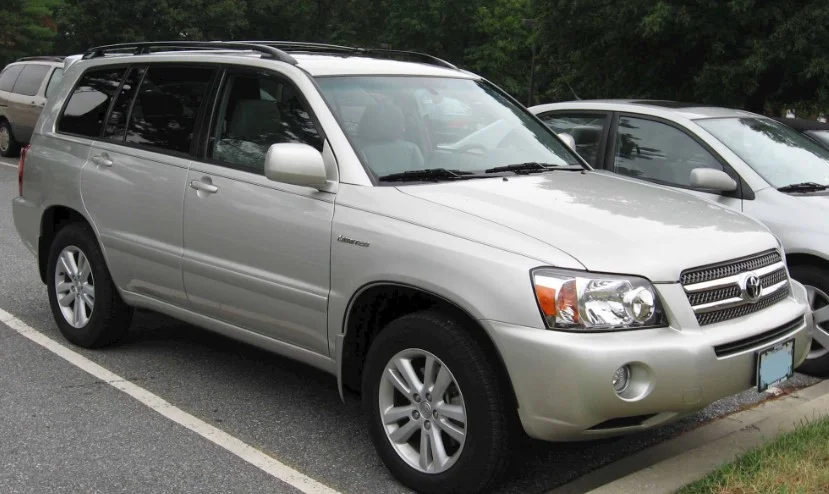5 Common 2005 Toyota Highlander Problems & Their Solutions
Even though the Toyota Highlander’s reliability is next-level, users still face some issues. It’s a great car, but not without faults. Long-time users can surely understand that.
The most frequent occurring 2005 Toyota Highlander problems are
- Oil leaks
- Check Engine Light coming on after an air filter replacement
- Malfunctioning O2 sensors
- Smoke coming from the exhaust
- Ignition coil failure
Keep on reading to get an idea of how you can prevent these issues and fix them when they occur.
2005 Toyota Highlander Problems & Their Fixes At A Glance
Here’s a quick table on the typical 2005 Toyota Highlander problems and their solution.
| Problems | Fixes |
|---|---|
| Oil leak | Replace the VVT-i oil line. |
| Check Engine Light coming on after an air filter replacement | Tighten the hoses leading out of the air filter chamber. |
| Malfunctioning O2 sensors | Replace the 02 sensors. |
| Smoke coming from the exhaust | Repair the bolt holes, mount the cylinder head accurately, & replace the head gasket. |
| Ignition coil failure | Replace all six ignition coils and the spark plug. |
Detailed Look At The Common 2005 Toyota Highlander Problems & Their Solutions
2005 Toyota Highlander’s reliability is off the charts good. Even so, users have some complaints that pop up frequently. Let’s take a look at those.
- Oil Leak
2005 Toyota Higlander’s VVT-i oil line has been reported to burst by many users. It’s a comparatively large oil leak that fills up your engine compartment, undercarriage, and ground.
When this happens during driving, you’ll get a warning. Both the engine oil pressure alarm and low engine oil error message will go off. You should shut your engine ASAP as continued use results in engine failures as well.
The most common way this problem develops is through the creation of a pinhole in the VVT-i hose. This hole gets exposed to corrosive vapor from the positive crankcase ventilation, which expands and leaks.
Solution
You can stop using engine covers to increase ventilation in that area. This will result in cooling that can prevent this issue from occurring. However, the best thing you can do is to upgrade to a higher-quality hose system.
When you have already suffered from an oil leakage, all you can do is:
- Replace the VVT-i oil line with an upgraded, better-enduring version.
- Clean out your undercarriage and engine bay very well before starting up the car for testing.
- Check Engine Light Comes on After Replacing Air Filter
This is another of those common 2005 Toyota Highlander problems that are easy to fix but you still have to be mindful of. We see a lot of cases where the Check Engine Light starts up after the air filter has been replaced. Explore common 2004 Toyota Highlander problems
Solution
Here’s what replacing the air filter involves.
- You can see the air filter as soon as you pop the hood. It’s placed inside the filter compartment.
- Replacing the air filter requires removing the cover of the filter compartment and then switching out the filters.
- Multiple hoses lead from the air filter compartment to other parts of your car. In the process, you can knock those hoses. That’s what causes the engine light to come on.
All you need to do is tighten them up. Your Check Engine light should turn off as soon as all the hoses are tightened in place.
- Malfunctioning O2 Sensors
2005 Toyota Hylanders have two O2 sensors. One of them is located at the front of the car, while the other is located at the back.
The front one is responsible for controlling the air-to-fuel ratio, while the one in the back monitors the catalytic converter. In case of oxygen sensor malfunctioning, the engine will stop functioning properly due to incorrect levels of air-fuel ratio.
That’s because fuel economy is lower without the correct ratio, emissions will rise, and components like the catalytic converter will be damaged. When these sensors are malfunctioning, your car self-diagnoses the issue and you’ll get the error message for failed O2 sensors.
Solution
The only way to solve this issue is by replacing the O2 sensors. If you’re confident in doing minor repairs on your car, you can order a replacement 02 sensor. Then, repair yourself to save some money. Here are the steps:
- After locating the sensor, use a 22 mm wrench to loosen it up and remove it.
- Next, coat the thread of the new sensor with anti-seize.
- Place the sensor in position and tighten the thread by rotating the sensor with your hands. That’s it. You’re done.
- In case you don’t have much experience, take your car to an auto repair shop. The labor cost should be close to $150.
In case you don’t have much experience, take your car to an auto repair shop. The labor cost should be close to $150.
- Smoke From Exhaust
Smoke coming from the exhaust is a common issue in the 2005 Toyota Highlanders when the head gasket fails. The main cause of this failure is a manufacturing defect that is seen in the cylinder block of these cars.
Your 2005 Highlander’s head bolts are reported to put a strain on the threads inside the engine block. The cylinder head can lift up due to this defect, which causes the following issues:
- Smoke from the exhaust.
- Rough running of the engine
- Overheating
- Check Engine light is lit
Solution
To prevent this issue from occurring, the best thing you can do is not run the engine when it’s overheated. Instead, wait for it to cool down to the normal temperature range.
However, if the head gasket has already failed, take the following steps:
- Take the engine apart and remove the cylinder head.
- Inspect the blocks to see if there is any warping.
- Remove the bolts holding the gasket sequentially.
- Start cleaning the cylinder head as well as the engine block.
- Start by placing the new head gasket onto the engine block. Secure the bolts in place.
- Reassemble the engine.
- Make sure to circulate the crankshaft and camshaft.
- Before finishing up, you need to replace the oil filter. Also, change the coolant and engine oil.
- Ignition Coil Failure
Some users have reported ignition coil failure after the first 100,000 miles. So, it’s a common problem faced by Highlander owners. The symptoms you should be on the lookout for when this happens are:
- Engine running roughly
- Check Engine light coming on
- Check Engine light is blinking
Solution
There are 6 ignition coils in the 2005 Toyota Highlander. The front three are located in the front portion of the motor. The other three are located below the air intake, which needs some work getting access to. You may also know about the 2003 Toyota Highlander problem and solution.
You need to replace all 6 at the same time. Removing one or two isn’t a good idea. In fact, you also need to replace the spark plug at the same time.
It’ll be harder to replace the rear ignition coils as you have to remove the intake to access it. Remember to use a fresh gasket when replacing the intake again. Hiring professionals for the job can cost above $200.
Not fixing your ignition coil isn’t good for your car as well as the environment. So, make it your top priority when you see it.
FAQs
Here are some commonly asked questions when it comes to 2005 Toyota Highlander problems.
Q. How much does Toyota head gasket replacement cost?
Replacing the head gasket of your Toyota can be a costly affair. You can expect a cost of $1600 on average. The labor cost is $800 and the rest is the cost of replacement parts.
Q. How long is the 2005 Toyota Highlander’s life expectancy?
Although built to last 250,000 miles, the vehicle has outperformed in a lot of cases. Users report logging in more than 300,000 miles. If you travel the average daily distance, the car should last 18 to 22 years.
Q. How much is the 2005 Toyota Highlander air filter replacement cost?
You have to pay close to $110 if you take your car to an auto repair shop for the replacement. The air filter itself is cheap and you can get it under $20. However, the labor cost is $90-$95.
Final Words
When it comes to the 2005 Toyota Highlander problems, there are years of customer complaints that help us determine the most common threats.
The 5 most prevalent issues are oil leaks, Check Engine Light coming on after an air filter replacement, malfunctioning O2 sensors, smoke coming from the exhaust, and ignition coil failure.
That being said, it’s a great car that offers a long lifespan of 20 years. If you drive carefully and maintain your vehicle well, you can get more than the expected 250,000 miles from this car.
You don’t have to be too alarmed about these issues. Just follow the instructions we provided to fix the malfunctions. Also, ensure proper maintenance to keep the vehicle in pristine condition.







